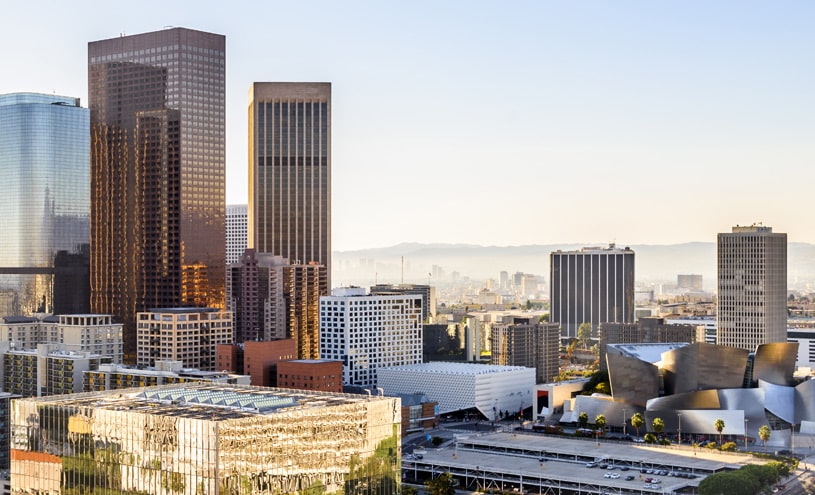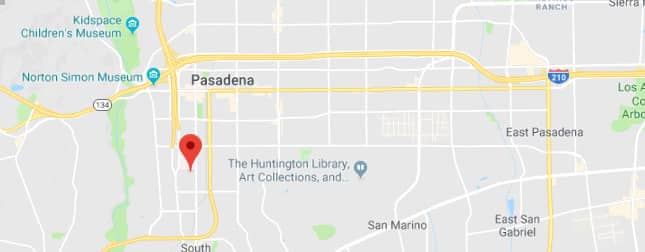 If you’ve had a rhinoplasty procedure in Glendale, you understand the transformative power it can have on your appearance and self-confidence. However, sometimes the results may not meet your expectations, leading you to consider revision rhinoplasty. Knowing when the right time is to seek out this procedure is crucial in achieving the results you desire. In this blog post, we will discuss the factors that come into play when deciding if revision rhinoplasty is the right choice for you. Dr. Eric Yavrouian provides revision rhinoplasty to patients in Glendale, Pasadena, Burbank, Greater Los Angeles, Beverly Hills, CA, and surrounding communities.
If you’ve had a rhinoplasty procedure in Glendale, you understand the transformative power it can have on your appearance and self-confidence. However, sometimes the results may not meet your expectations, leading you to consider revision rhinoplasty. Knowing when the right time is to seek out this procedure is crucial in achieving the results you desire. In this blog post, we will discuss the factors that come into play when deciding if revision rhinoplasty is the right choice for you. Dr. Eric Yavrouian provides revision rhinoplasty to patients in Glendale, Pasadena, Burbank, Greater Los Angeles, Beverly Hills, CA, and surrounding communities.
What Is Revision Rhinoplasty and When Is It Considered?
Revision rhinoplasty, often termed as secondary rhinoplasty, is a complex surgical intervention aimed at refining or rectifying the outcomes of an initial rhinoplasty operation. This procedure is notably intricate due to the need for the surgeon to navigate through and correct the modifications made during the first surgery, including the presence of scar tissue and any changes in the nasal structure. Individuals opt for revision rhinoplasty for various reasons, which broadly fall into two categories: dissatisfaction with the aesthetic appearance post-primary rhinoplasty or the emergence of, or persistence of, functional issues.
In terms of aesthetics, a person might seek revision if the original rhinoplasty did not fulfill their expectations for their nose’s appearance, or if it resulted in new aesthetic concerns. Such issues can range from asymmetry and disproportion to undesirable alterations in size or shape. On the functional side, some patients experience breathing difficulties, persistent nasal congestion, or other challenges affecting nasal airflow and function after their first rhinoplasty. These functional complications not only affect a person’s quality of life but can also contribute to the decision to undergo a revision procedure.
The decision to proceed with revision rhinoplasty is not one to be taken lightly. It requires a thorough assessment of the existing nasal structure, an understanding of the individual’s concerns and desired outcomes, and a realistic appraisal of what can be achieved through a secondary procedure. Furthermore, given the complexities associated with revision surgeries, finding a surgeon with specific expertise in revision rhinoplasty and a deep understanding of the facial anatomy is paramount.
Patients considering this procedure should also be aware that timing plays a crucial role in the success of revision rhinoplasty. The nasal structure needs ample time to heal from the first surgery before undergoing another operation. This period allows for the resolution of swelling and the softening of scar tissue, which are critical factors in determining the feasibility and potential success of a revision.
The Critical Waiting Period Post-First Surgery
Embarking on the journey of revision rhinoplasty requires patience and an understanding of the healing process that follows the initial nose job. The timeframe immediately following your first rhinoplasty is pivotal; it’s a phase where the body is undergoing significant changes, adapting to the alterations made to the nasal structure. This period is often marked by swelling and the formation of scar tissue, both of which can significantly impact the appearance and functionality of the nose. To accurately evaluate the outcomes of the primary rhinoplasty and to determine the necessity and timing for a potential revision, a waiting period is indispensable.
It is generally advised to wait a minimum of one year after your first rhinoplasty before considering a revision. This recommendation is not arbitrary but is grounded in the biological processes of healing and tissue remodeling. Swelling, which can obscure the true shape and contours of the new nasal structure, takes time to fully resolve. Similarly, scar tissue, which can initially appear firm and may distort the nasal form, gradually softens over time, allowing for a more accurate assessment of the final surgical results.
This waiting period serves multiple purposes. First and foremost, it ensures that the nasal tissues have adequately healed and that the physiological changes post-surgery have stabilized. This stabilization is crucial for the surgeon to assess the nose’s appearance and function accurately and to plan an effective revision strategy. Rushing into a revision without allowing for complete healing may result in complications or dissatisfaction with the revision results, as the unresolved swelling and unsoftened scar tissue from the first surgery could lead to inaccurate corrections and further disappointment.
Additionally, this time allows you to adjust to the changes in your nasal appearance and to evaluate whether the initial concerns warrant additional surgical intervention. In some cases, as the swelling subsides and the nose’s final shape emerges, patients find that their initial dissatisfaction diminishes and that they are pleased with the outcome of their first surgery.
Understanding the critical nature of this waiting period is essential for anyone considering revision rhinoplasty. It not only frames realistic expectations for the healing process but also highlights the importance of giving your body the time it needs to recover fully before undergoing another procedure. This approach ensures the best possible foundation for achieving satisfactory results with a revision rhinoplasty.
Aesthetic Concerns vs. Functional Issues
Distinguishing between aesthetic concerns and functional issues is a pivotal step in the journey toward revision rhinoplasty. Aesthetic concerns primarily revolve around the visual aspects of the nose that an individual may find displeasing. These can range from issues of symmetry, where one side of the nose does not mirror the other, to concerns about the overall shape and size of the nose. For some, the dissatisfaction lies in a nose that seems disproportionately large or small relative to the rest of their facial features, or in the outcome of the initial rhinoplasty that did not align with their expectations. These aesthetic discrepancies can significantly impact a person’s self-image and confidence, making the desire for revision a deeply personal decision.
On the other side of the spectrum are functional issues, which encompass difficulties related to the nose’s performance in breathing and overall nasal function. These problems may include but are not limited to, challenges in breathing through the nose due to internal obstructions, a deviated septum not adequately corrected in the first surgery, or complications that arose post-operatively, affecting the nasal passages and airflow. Unlike aesthetic concerns, functional issues can have a tangible impact on an individual’s quality of life, leading to discomfort, sleep disturbances, and other health complications.
The distinction between these two categories is not merely academic; it guides the surgical planning process, influencing the techniques and strategies a surgeon might employ during revision rhinoplasty. While aesthetic revisions often focus on reshaping the nasal structure for a more pleasing appearance, functional corrections aim to address internal anomalies to restore or enhance nasal function. It’s not uncommon for patients to present with both aesthetic and functional concerns, necessitating a comprehensive approach that addresses both aspects to achieve a balanced and satisfactory outcome.
Understanding the nature of your concerns is a critical component of the revision rhinoplasty process. It informs the dialogue between you and your surgeon, shaping the objectives and expectations of the procedure. Whether driven by aesthetic dissatisfaction, functional impairment, or a combination of both, acknowledging and articulating these issues is the first step toward a successful revision rhinoplasty experience.
Consulting with a Specialist
Embarking on the path toward revision rhinoplasty requires the guidance of a surgeon who is not only board-certified but also brings a wealth of experience in facial plastic surgeries, particularly revision procedures. This specialist’s expertise becomes invaluable as they navigate the complexities introduced by previous surgeries, including scar tissue and changes in nasal anatomy. When meeting with such a surgeon, the process begins with an in-depth evaluation of your nasal structure, aimed at identifying the specific issues stemming from the initial rhinoplasty and understanding your personal goals for the revision.
The discussion will encompass a thorough review of your medical history and any prior surgical interventions. This includes examining operative notes from previous procedures and evaluating imaging studies to gain a comprehensive view of your nasal structure. Such a meticulous approach is critical for crafting a surgical plan tailored to address both the aesthetic and functional concerns unique to your case.
Your surgeon’s role extends beyond the physical assessment; they serve as a trusted advisor, setting realistic expectations about what can be achieved through revision rhinoplasty. This dialogue is essential, as it aligns your goals with the surgical possibilities, ensuring a shared vision for the outcome of the procedure. An experienced surgeon will articulate the potential improvements, limitations, and the realistic scope of results, thereby fostering a transparent and informed decision-making process.
The consultation is also an opportunity for you to voice any questions or apprehensions you might have. A specialist in revision rhinoplasty will provide clarity on the specifics of the procedure, recovery timelines, and what steps are involved in ensuring the best possible results. This open communication is vital for establishing a rapport with your surgeon, laying the foundation for a successful surgical journey.
In choosing a surgeon for revision rhinoplasty, it’s imperative to seek someone with a proven track record of addressing complex cases, who emphasizes personalized care. Their expertise not only in the surgical aspects but also in understanding the nuances of patient expectations and concerns, plays a pivotal role in navigating the intricacies of revision rhinoplasty to achieve outcomes that enhance both appearance and function.
Contact Us For a Consultation with Southern California Facial Plastic and Reconstructive surgeon Dr. Eric Yavrouian
For more information about treatments and procedures by Facial Plastic and Reconstructive Surgeon, Dr. Eric J. Yavrouian, serving patients in and around Glendale, Pasadena, Burbank and the Greater Los Angeles, CA area call 818-241-2150 or click here to contact him for a consultation.






